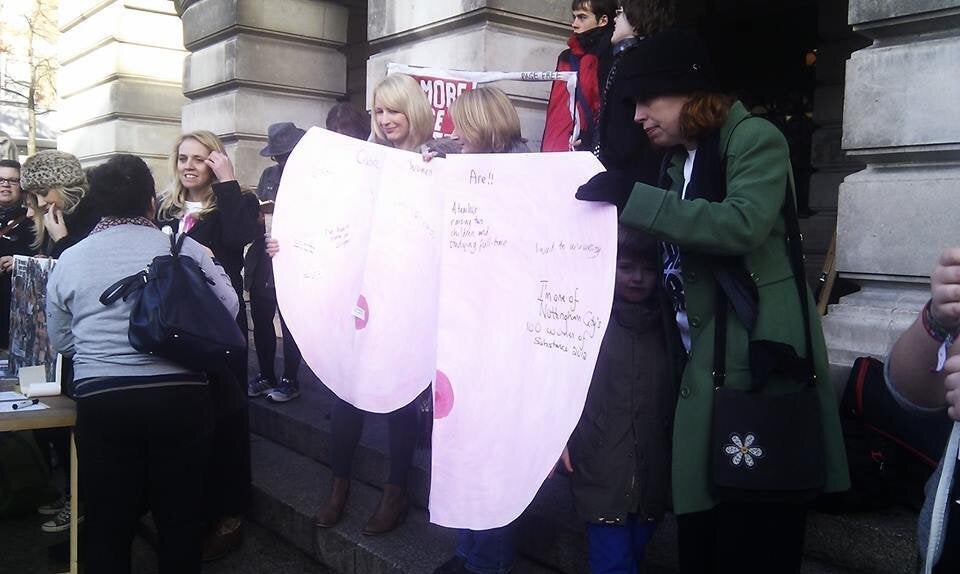Jeremy Clarkson is well-known for his controversial views and his daughter Emily seems to be a chip off the old block.
Just days after Tesco announced they will no longer be displaying the front covers of tabloids in store, the 20-year-old has said she believes topless models set a good example to other women.
Commenting on feminist campaigns to ban topless models from newspapers (like No More Page 3), Clarkson says: "These girls aren’t porn-stars, they aren’t half starved and they certainly aren’t a size 6.
"But you know what they are? Gorgeous. Healthy. Confident. Smiling. So why do we have such a beef with it?"

Jeremy Clarkson with daughter Emily
Her blogpost, titled 'How we are Killing the Curvy Woman', suggests we should be celebrating topless models, rather than branding them as "slags."
"Keira Knightley took off her top and the whole world screamed 'oh my god, you’re so brave, you’re so beautiful, go you, this is so classy, oh my it’s so tasteful…’ yet the Page 3 Girls doing it every day get branded slags. Why? How is that fair?" she adds.
As feminists, we agree that a woman should be able to make her own decisions regarding what she does with her body, but we can't help but think Clarkson has missed the point of the No More Page 3 campaign.
As the campaign's website states: "We love breasts! And have nothing against the women who choose to show them, we simply feel that a family newspaper is the wrong context for these images."
Clarkson asks "Why are ‘feminists’ criticising it all the time?", but we're not criticising these women, we are simply arguing that boobs are not news.
By placing sexualised images of women next to articles of clothed, high-profile men, we perpetuate the sexist notion that a woman's value is in her cleavage, while a man's is in his ability to act as a leader in society.
Women in this context are objectified, and gender equality becomes one step further away.
SEE ALSO:
Breast Cancer Charity CoppaFeel! (And Critics) Speak Out About Controversial Page 3 Partnership
Keira Knightley's Topless Picture Is Not Empowering or Feminist, As Proven by the Sun's Page 3
Clarkson does however raise thought-provoking debate about body image and size.
She argues that it is women, not men, who criticise curvy women and promote a "size zero society" and asks whether Keira Knightley's topless image was applauded "because we can see her ribs".
She points out that Adele's appearance on the front of Vogue led to one of the worst issue sales in history, suggesting that women do not champion curves as much as we claim to.
"Why is it so hard for women any bigger than a Size 10 to take her clothes off and not be a slag? Why is it that when we put normal women in clothes we won’t buy them?" she asks.
In response, HuffPost blogger Louise Pennington points out that Page 3 models - who are 'normal' according to Clarkson - do not exactly promote body diversity anyway.
"I dislike the terms 'normal' or 'real women' as this still creates a hierarchy of acceptable bodies for women," she says.
"The term 'real women' still refers to young, white, blonde haired women who have large breasts but who are not fat.
"We need to start recognising that women's bodies are all different: some women are thin or skinny , some women have large breasts and wide hips, other women are over-weight, athletic, muscular or disabled."
We totally agree with Clarkson that the media needs to show a more diverse range of body types, but presenting them unclothed in a newspaper is really not the way.
